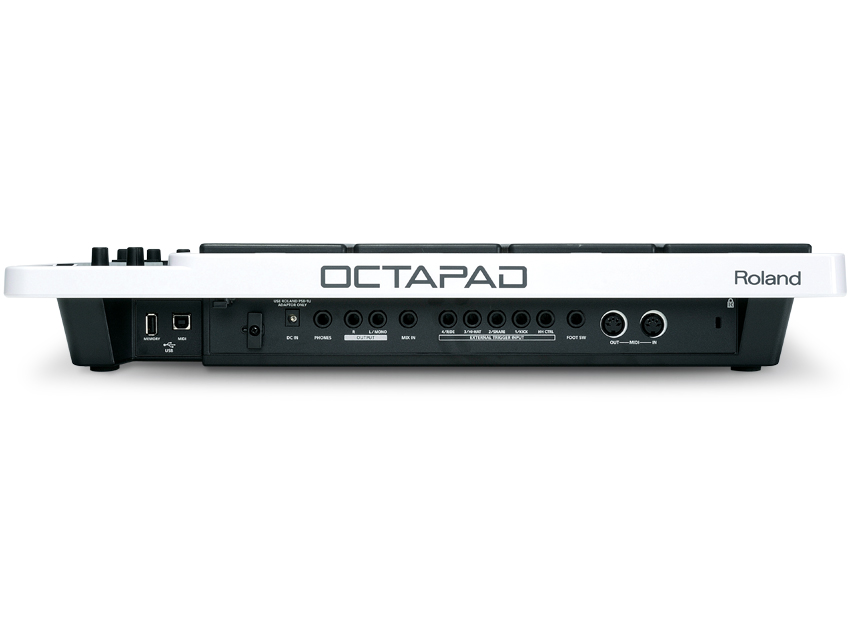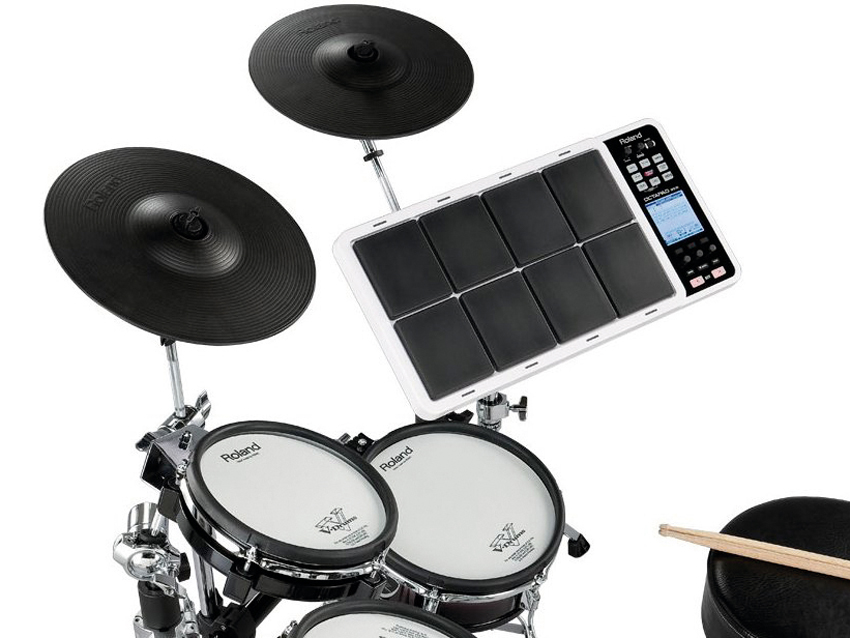MusicRadar Verdict
For drummers or percussionists looking to add electronic sounds to an acoustic set-up with the minimum of fuss, the SPD-30 is a great choice. And the fact that it's the latest in a line of well-proven tools allows for real confidence in its long-term abilities.
Pros
- +
Combine predictably gorgeous sound with better-than-ever functionality, the ability to connect external pads for an extensive playing set-up and the Phrase Loop feature for creativity on-stage and you're on to a winner.
Cons
- -
Nothing of note.
MusicRadar's got your back

Roland Octapad SPD-30

Roland Octapad SPD-30

Roland Octapad SPD-30
It's hard to believe, but it's a quarter of a century since Roland introduced the original Octapad (the Pad-8). First embraced by flouncy-trousered New Romantics gaily triggering the fizzing snares and brash handclaps of contemporary drum machines, the Octapad has grown from a soundless trigger-surface-only pad to a fully fledged music-making tool in the last 25 years.
Designs don't stick around that long unless they're fundamentally solid, so it's testament to Roland getting a lot of things right from the off that the eight-padded wonder is still with us.
Build
One of the things that immediately hit the mark in 1985 was the size and layout of the Pad-8. Eight well-proportioned pads gave decent target areas for live performance, and the number of pads meant access to 'full kits' of hi-hat/snare/kick and toms or good arrays of ethnic percussion tones all at once.

Sensibly, Roland has never strayed from the original blueprint. The new Roland SPD-30 reviewed here, however, is a little slinkier than the tea tray-simple styling of older models.
The pads are slightly recessed into a nicely curved ice-white plastic chassis, while the control area on the right of the unit is reassuringly Roland. By which we mean everything's laid out neat as a spinster's pantry, with a smattering of rubbery tactile buttons and continuous data pots surrounding a generous 2.5" square backlit LCD.
The rear of the unit is equally impressive - assuming you're fascinated by the interconnectivity offered by hi-tech musical production tools, of course. MIDI in/ out is to be expected, as are L/R stereo and headphone outs and Mix In socket for iPods etc; but there are also five 0.25" sockets to allow for use with V-Drum ride, hi-hat, snare and kick pads (so you could potentially use the Octapad as a super-compact e-kit), plus USB MIDI connection and a USB memory slot for storing user-created data.
In all, it's a thoroughly modern package that's been well conceived to meet the demands of both studio and live use. Internally, things continue in much the same vein. Fifty kits made up from nearly 700 sounds, 30 multi-effect types, seven ambience settings and the ability to create up to 50 phrase loops are just some of the SPD-30's highlights.
Want all the hottest music and gear news, reviews, deals, features and more, direct to your inbox? Sign up here.
In short, it's a powerful little package.
Hands on
Even without delving into the complexities of creating loops or editing sounds, the new Octapad is impressive. The wonderfully responsive pads are lovely to play and the stock of preset patches serves up an endlessly satisfying selection of full-bodied tones. The acoustic sounds (both drum kit and ethnic percussion) are involving and realistic, while the electronic offerings are chunky and have that lovely 'produced' depth that is typical of all that Roland has turned out, from the JV synth series on.
The great thing about a company so steeped in electronic music production as Roland is that the R&D resources lavished on top-end synth engines permeate through its disparate ranges, and the Octapad benefits hugely from decades of heavy-duty programming and sound creation. In short, it sounds ace.
But Roland also has a track record of managing to balance functionality with ease of use - of prime importance to demanding users working on stage and studio. While there are compromises to be struck with a unit like the SPD-30 (its compact nature means a certain degree of menu navigation via the on-board LCD), the operating system is such that everything is as logical and easily accessible as it can be.
Editing parameters rarely involves more than half a dozen button/control pot actions, and there's a good deal of scope for tweaking everything from tuning to sound layering to sensitivity.
The Phrase Loop function is also a great addition. Recording loops is straight-forward and these can then be saved (internally or onto USB memory stick) to be recalled in performance. With a phrase looping round, you can then use the pads to play over the top for some super creative, layered action.
- Check out the best electronic drum pad competition